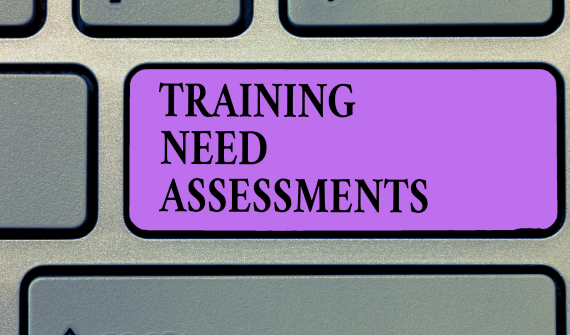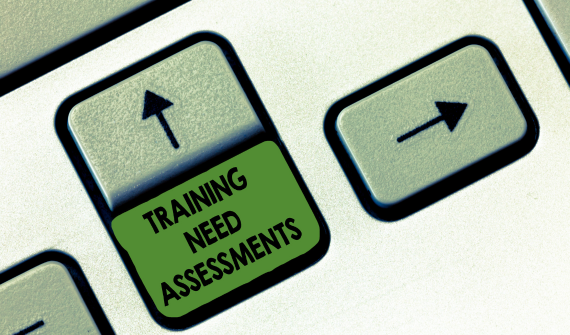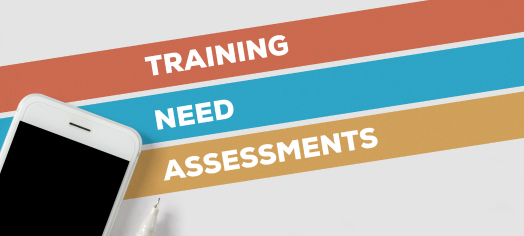In today's dynamic business environment, a training needs assessment is crucial for organizations seeking to optimize their workforce development strategies.
This article on how to conduct a training needs assessment provides a concise roadmap for this essential process.
It offers practical insights, methodologies, and best practices to identify knowledge and skill gaps within an organization.
By following this step-by-step approach to how to conduct a training needs assessment, readers will learn how to establish objectives, collect and analyze data, and develop targeted training solutions.
With a systematic training needs assessment, organizations can align their training programs with employee requirements, improve performance, and achieve their business goals effectively.
Unlock the full potential of your workforce by implementing this comprehensive guide and staying ahead in today's competitive landscape.
Importance Of Conducting A Training Needs Assessment

According to the survey, 74% of employees expressed that they are unable to reach their maximum potential at work due to limited opportunities for growth and development.
Conducting a training needs assessment is of paramount importance for organizations aiming to enhance the effectiveness and efficiency of their workforce development initiatives.
Here are key reasons why conducting a training needs assessment is crucial:
1. Identifying Knowledge And Skill Gaps
Training needs assessment helps identify gaps in knowledge, skills, and competencies within the organization.
By understanding these gaps, organizations can tailor training programs to address specific needs and ensure targeted skill development.
2. Optimizing Training Investments
Conducting a needs assessment enables organizations to allocate their training resources effectively.
By focusing on areas where training is most needed, organizations can maximize the impact of their training programs and avoid wasting resources on unnecessary or redundant training initiatives.
3. Enhancing Employee Performance
By identifying and addressing skill gaps, a training needs assessment directly contributes to improving employee performance.
Targeted training interventions can equip employees with the necessary knowledge and skills to excel in their roles, leading to increased productivity and job satisfaction.
4. Supporting Organizational Goals
Training needs assessment aligns training initiatives with organizational objectives.
By identifying the skills and competencies required to achieve strategic goals, organizations can ensure that their training efforts contribute directly to overall business success.
Based on the survey findings, a significant majority of millennials, 76%, consider professional development opportunities as one of the key elements of a company culture that holds utmost importance.
5. Promoting Employee Development And Engagement
Conducting a needs assessment demonstrates a commitment to employee development and growth.
It fosters a culture of continuous learning, empowers employees to acquire new skills, and increases their engagement by providing opportunities for professional advancement.
In summary, a training needs assessment is vital for organizations seeking to optimize their training investments, enhance employee performance, align training initiatives with strategic goals, and foster a culture of continuous learning and development.
How To Conduct A Training Needs Assessment?

A significant majority of employees, 74%, demonstrate a willingness to acquire new skills or undergo retraining to ensure employability.
A training needs assessment is a systematic process of identifying the knowledge, skills, and competencies required by individuals or teams within an organization.
It plays a crucial role in aligning training initiatives with organizational goals, optimizing training investments, and enhancing employee performance and engagement.
This step-by-step guide will provide you with a comprehensive framework to conduct a training needs assessment effectively which would include the objectives as well as the components of a training needs assessment.
1. Objectives Of A Training Needs Assessment
- Identify Skill Gaps:
The primary objective of a training needs assessment is to identify gaps between desired and actual performance levels.
By understanding the areas where employees lack the necessary knowledge or skills, organizations can design targeted training programs to bridge those gaps.
- Align Training with Organizational Goals:
Another objective of a training needs assessment is aligning the training with the goals of the organization.
Training needs assessment helps ensure that training initiatives are directly aligned with organizational objectives.
By identifying the skills and competencies required to achieve strategic goals, organizations can tailor training programs to meet those specific needs.
- Enhance Employee Performance and Engagement:
A well-executed training needs assessment facilitates professional development, enhances job performance, and increases employee engagement.
By addressing skill gaps through targeted training, employees can improve their performance and feel more empowered in their roles.
2. Components Of A Training Needs Assessment
Let’s have a look at the different components of a training needs assessment:
- Defining Training Goals and Objectives:
Clarify the desired outcomes and performance expectations that the training needs assessment aims to address
- Identifying Target Audience:
Identify the specific groups or individuals within the organization who will be the focus of the assessment.
- Collecting Data through Surveys, Interviews, and Observations:
Describe the methods for gathering information, including surveys, interviews, and direct observations, to gain insights into current knowledge and skill levels.
- Analyzing Current Performance and Skill Gaps:
Explain the process of analyzing collected data to identify gaps between desired and actual performance levels.
- Prioritizing Training Needs:
Discuss the importance of prioritizing identified training needs based on urgency, impact on organizational goals, and feasibility.
- Designing the Assessment Methodology:
Outline the steps involved in designing the assessment methodology, including selecting appropriate tools, establishing evaluation criteria, and determining data collection processes.
- Conducting the Training Needs Assessment:
Provide guidance on administering surveys, conducting interviews, observing job performance, and analyzing existing training records and performance metrics.
- Analyzing and Interpreting the Data:
Explain how to organize and summarize collected data, identify common themes and patterns, and assess the urgency and impact of training needs.
- Developing a Training Plan:
Guide the reader through the process of setting clear training objectives, designing targeted training programs and activities, and allocating resources and timelines.
- Implementing the Training Plan:
Discuss the importance of delivering training programs, monitoring their effectiveness, and evaluating their impact on performance.
- Reviewing and Reassessing Training Needs:
Highlight the significance of continuous feedback, improvement, and adapting training programs to evolving organizational needs.
Reiterate the value of how to conduct a training needs assessment as a strategic tool for optimizing workforce development efforts and achieving organizational success.
Enhance Employee Training With Oreed: Unlocking The Power Of Personalized Development

Discover a new era of employee training with Oreed, an innovative educational intelligence platform that redefines the way organizations approach workforce development.
Through Oreed's advanced features and capabilities, you can elevate your training programs to new heights.
1. In-Depth Understanding Of Your Team
Harness the power of data-driven insights provided by Oreed to gain a comprehensive understanding of your employees.
Make informed decisions based on evidence and tailor training interventions to address specific skill gaps and performance areas.
2. Customized Training And Courses
Leverage Oreed's capabilities to design personalized training and courses that cater to the unique strengths and weaknesses of your team.
By tailoring the learning experience, you empower individuals to unlock their full potential and achieve exceptional results.
3. Measurable Impact
Measure and quantify the effectiveness of your training initiatives using Oreed's detailed analytics and reports.
Gain valuable insights into the impact of training on employee performance and ensure that your investments deliver maximum value.
4. Drive Exceptional Outcomes
Maximize your organization's productivity, efficiency, profitability, and customer engagement through the utilization of Oreed.
Experience remarkable revenue growth and heightened customer engagement, amplified by Oreed's robust learning tools that have the potential to increase performance by up to 10 times.
Empower your employees with personalized learning journeys that enable them to advance at their preferred pace, unlocking their full potential and achieving outstanding results.
5. Nurturing Mastery And Discipline With Oreed
With Oreed, your organization can actively cultivate the values of mastery and discipline, aligning with the objectives of your 2030 vision.
Our comprehensive learning platform empowers individuals to develop expertise and sharpen their skills through guided learning journeys and personalized training programs.
By leveraging Oreed's advanced tools and resources, employees can acquire mastery in their respective domains, honing their capabilities and driving excellence in their work. Additionally,
Oreed promotes discipline by providing a structured and organized approach to learning, ensuring consistent progress and sustained growth.
Through Oreed's offerings, your organization can foster a culture of continuous learning, enabling employees to embody the values of mastery and discipline, ultimately contributing to the realization of your 2030 vision.
So what are you waiting for? Book a demo with Oreed today and find out more about our features.
Promote lifelong learning through Oreed by experiencing the most powerful all-in-one training and development intelligent platform that streamlines all your organization's learning, training, and development activities in one place.
Final Thoughts
In conclusion, a training needs assessment is essential for effective employee development and organizational success.
By following the step-by-step guide on how to conduct a training needs assessment provided, organizations can identify skill gaps, prioritize training needs, and design targeted programs.
This empowers decision-makers to make informed choices, optimize resources, and maximize the impact of training initiatives.
Training needs assessment promotes continuous improvement, adaptability, and a skilled workforce.
Remember to regularly review and reassess training needs to stay aligned with evolving goals.
Embracing this guide unlocks employee potential, drives performance, and cultivates a competitive edge.
FAQs
1. What are three 3 types of training that need assessment?
- Organizational Assessment:
This type of assessment focuses on evaluating the overall training needs of the organization.
It considers factors such as business goals, performance gaps, and workforce capabilities to identify areas where training can improve organizational effectiveness.
- Task or Job Assessment:
Task assessment involves analyzing the specific skills and knowledge required to perform particular job roles or tasks within the organization.
It helps identify the training needs of individual employees or groups based on the requirements of their job responsibilities.
- Individual Assessment:
Individual assessment involves evaluating the skills, knowledge, and performance of individual employees.
It aims to identify their strengths, weaknesses, and areas for improvement, allowing for personalized training interventions.
2. What are the four 4 basic criteria used to evaluate training?
- Relevance:
The extent to which the training content and objectives align with the specific needs of the employees and the organization.
It assesses whether the training addresses the identified skill gaps and contributes to improved job performance.
- Effectiveness:
The degree to which the training achieves its intended outcomes and objectives.
It evaluates whether the training has resulted in measurable improvements in employee knowledge, skills, behavior, or performance.
- Efficiency:
The efficiency criterion measures the cost-effectiveness of the training program.
It assesses whether the training delivers value for the resources invested, considering factors such as time, money, and other resources utilized.
- Transferability:
This criterion focuses on the application of training knowledge and skills to the actual job context.
It assesses whether employees can effectively transfer what they have learned during training to their daily work tasks and duties.





